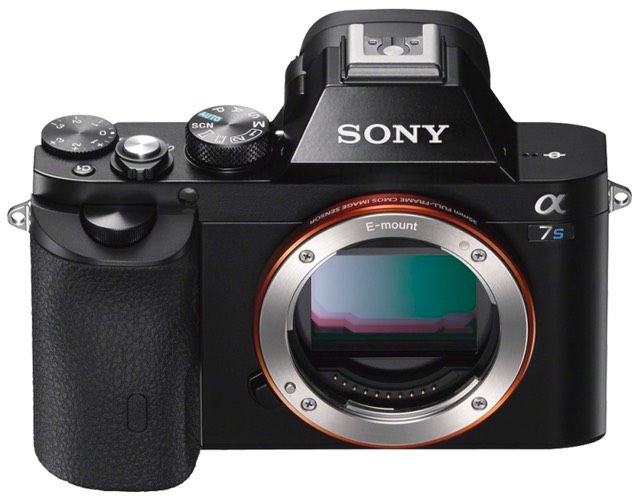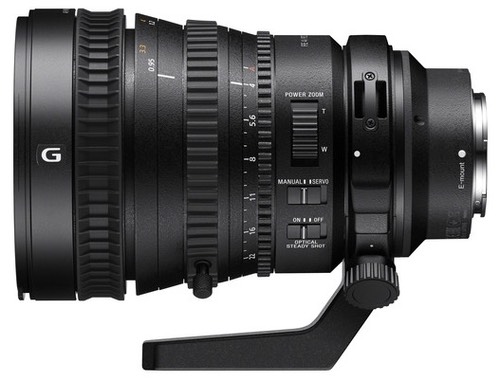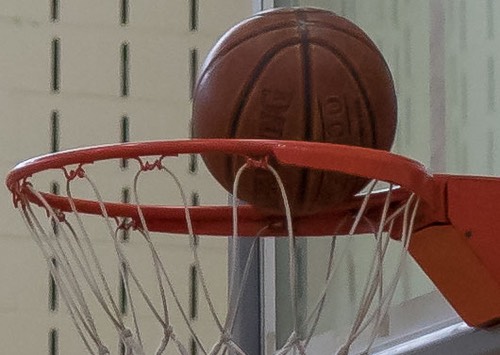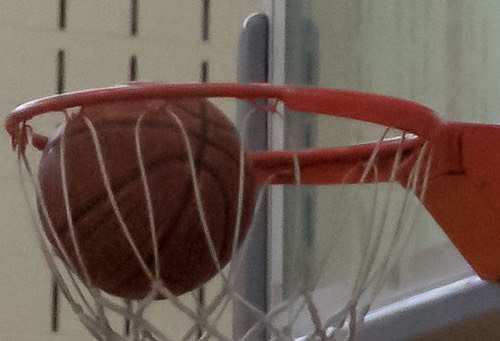I’m going to try to keep this review brief, as the A7s shares a great deal with the A7 and A7r that I’ve already reviewed. In fact, more than a great deal, it shares pretty much everything except one key part. I invite you to read my review of the A7/A7r first, then come back here to read about what’s different with the A7s model.

What is It?
The A7s is the third model in the A7 lineup, and as with the two previous models, the primary difference revolves around in the sensor. The three A7 models are otherwise close-to-identical in body design, controls, and virtually all features that don’t have a sensor component to them.
The primary difference in the sensors works out this way:
- A7s — 12mp full frame sensor, with substantive video optimizations
- A7 — 24mp full frame sensor
- A7r — 36mp full frame sensor, with AA filtration removed
I personally like what Sony has done here. There are times when each of the three A7 models is the appropriate camera for me to pick up to shoot with, and by keeping them pretty much the same other than sensor, I can comfortably move from the A7s to the A7r without batting an eyelash. Controls are in the same spot and work the same way. With the A7s I have low light and video champ, while with the A7r I have a landscape workhorse that produces pixels galore. Kudos to Sony for getting this right (Nikon’s been drifting towards getting this wrong with their DSLRs).
So what’s really different with the A7s?
Well, that 12mp sensor has far larger photosites than the A7 and especially the A7r. In low light, the area over which light is collected becomes important (more is better), and the A7s has a lot of additional area compared to the other two cameras. Given current technologies (as I write this near the end of 2014) the A7s sensor is arguably the low light champion, as it uses current Sony sensor technologies coupled to very large photosites. A bit more on that when I get to performance later in the review.
Together with the low light capabilities, Sony reworked the sensor and camera to provide additional video capabilities. Most notably:
- 4K video at 30P, including a clean 8-bit 4:2:2 output, via the HDMI port
- 1080P/60 recorded in XAVC S at up to 50Mbps, which should give you broadcast quality
- An additional S-Log2 Picture Profile to make for easier post-grading of video
- Timecode (TC/UC and Free Run/REC Run, including dropped frame support)
- Full use of all pixels in video (no line skipping)
- APS-C crop video at up to 120 fps (720P)
While touted as a GH4 rival, the A7s actually is a bit more limited internally than the GH4 for video. The GH4 can record 4K video on cards, the A7s can’t. The GH4 has 10-bit output on the HDMI, the Sony is 8-bit. The GH4 maxes out at 200Mbps bitrate, the A7s at 50Mbps. The GH4 includes additional features like Color Bars that the Sony doesn’t have. Still, the A7s is very much a sophisticated video camera.
The Sony A7s uses the entire sensor for video in all modes except crop mode, where it uses a subset. Peaking and zebra stripes are supported. The frame can have the “safety zone” shown (area guaranteed to be shown even on out of alignment displays). Headphone and mini-plug microphone jacks are on the left side (as they are on other A7 models). Continuous manual exposure change is supported in video, as it should be in any video camera, frankly. Ditto Auto ISO.
Other than the sensor and video, the A7s is pretty much like an A7. As with the other A7 models, you can use FE lenses (full frame) or E lenses (APS crop).
How’s it Handle?
Normally, I wouldn’t have anything to say here. The A7s handles the same as the A7 and A7r. Fortunately, most of the added video features (e.g. zebras and marker displays) can be added to buttons and even the Fn menu. So you can configure the camera for video shooting if that’s your main work with the A7s.
The video record button has been migrating on Sony cameras to an out-of-the-way place (tucked off behind the thumb grip where you won’t accidentally trigger it). Funny thing is, I still accidentally trigger video when I don’t want it, and now the record video button is not in an optimal place on a camera I really might want to record video with. This is one of the problems with trying to build cameras that do two things: neither ends up optimal.
However, Sony made one small mistake with the A7s, I think: there’s no dedicated video menu. Video menu items are scattered throughout the 26-page menu system. This is a camera that really could have used the video bits to be grouped logically. Indeed, the first time I went to shoot video on the camera, I had to spend a lot of time going menu-by-menu to make sure that I hadn’t forgotten something important. Even Nikon has caught on to the need for a separate video menu (D750) these days. Sony needs a bit of a rethink on the A7’s menus, too.
One thing they could have done is replace the Camera menus with Video menus when you select video on the Mode dial up top. The problem is that when shooting video the Camera menu has three things grayed out on the first menu page, three on the second, one on the third, one on the fifth, five on the sixth, two on the seventh, and one on the eighth. That’s 16 grayed out items, or almost three full pages worth that could have been collapsed, reducing the scrolling necessary to find something you want to set.

There’s really only one lens that’s targeted towards video for the FE mount cameras at the moment, and that’s the Sony 28-135mm f/4 power zoom (with gear-friendly rings). This lens is more expensive than the camera and will stick two pounds out front of an otherwise svelte camera. My brief use of this lens tells me it is excellent, but as usual with the dedicated video gear, your rig gets big and heavy fast, which is kind of the antithesis of the A7 series. Put another way, there’s a bit of a cognitive dissonance in the A7s: yes, it’s an excellent video camera, but lens handling sounds will be a problem with anything other than 28-135mm, and that lens seems awkwardly big on an A7s.
While it’s not camera handling per se, note that not all video software has been updated to deal with XAVC S codecs. If you need to preview A7s clips on your laptop, make sure you have VLC loaded, which will play them just fine. Also note that XAVC S files can only be recorded on SDXC cards; plain SD cards can only use the old AVCHD codec, which maxes out at 28Mbps.
Other than that, my handling impressions on the A7/A7r are intact.
How’s it Perform?
It really all gets down to how the sensor performs, doesn’t it?
Video: Actually quite good. If you’re into getting high quality video, this is the A7 model you want, if for nothing else other than how clean the video can be. 1080P is actually oversampled on this camera, so you’re getting the benefits of downsizing coupled with no line-skipping artifacts to start with. I was quite impressed with the 1080P output of the camera, and the 50Mbps XAVC S codec makes for a reasonable sized file that will survive all the way to broadcast, if necessary.
In 4K mode via the HDMI port, things are also good, though the 8-bit limitation is a little bit frustrating for a camera that’s supposedly good in low light. I see a little bit of blockiness in the shadows that probably wouldn’t be there if Sony had implemented 10-bit.
Rolling shutter is well under control for normal uses. I didn’t try any extreme pans (nor would I use any in a production ;~).
On the other hand, autofocus is not exactly spry on the A7s, and you don’t have a lot of control over it. It does do a pretty good job of following faces, but frankly, I think you need to pull focus manually if you want to shoot high quality video with the A7s. There’s just a bit too much hunting from time to time that can ruin a clip if you shoot with autofocus enabled.
Stills: Let’s go to the court, shall we?

Here’s my usual underexposed, ISO 3200 sample at 100%. It’s actually very clean, and with proper exposure and a bit of additional work, it’d be about as clean as I’ve seen with a still camera, though with Sony’s JPEG system (and Adobe’s raw conversion tools) I’m losing a bit of detail due to noise reduction. Colors do tend to block up a bit with the A7s at high ISO values, especially if you underexpose at all. Overall, I’d judge the Nikon 16mp sensor to be just a tiny bit better for holding detail, but the A7s is definitely doing things in low light that no other mirrorless camera matches.
Let’s get greedy, though, and boost the ISO to 12,800:

Here I’m losing edge acuity due to noise reduction (and the low 12mp sensor count), but the results are still remarkably usable. Remember, this is an actual pixel crop from a 70mm view standing from a fixed position on the sideline. It’s unlikely you’d be pushing the A7s this far with output. Also note that this is with an f/4 lens instead of the usual f/2.8 lens I tend to use, so you really should compare this against ISO 25,600 photos I’ve done in the same circumstances with other cameras.
Overall, I’d tend to say that ISO 6400 is my “absolutely comfortable” boundary with this camera, much as it is with the Nikon D4/D4s/Df, the other low-light champion full frame cameras out there.
I should point out that Sony’s JPEG engine actually tends to do a better job with well-exposed high ISO results than I can squeeze out of Adobe’s converter. Adobe’s noise reduction tends to either blur edges or produce mosquitoes on edges with the A7s’s images. I’m sure I could do better with other noise reduction workflows, but I know that a lot of you think that Lightroom or ACR is all you need. I’d say that if you’re going to press the A7s as far as it will go, you need to rethink your allegiance to Adobe.
Overall, the A7s has all the usual Sony attributes: good color discrimination and deep dynamic range, for example. At base ISO the A7s is not quite the dynamic range champ the A7 or A7r are, but by ISO 800, the A7s has clear benefits over those two cameras. Indeed, the further you push the A7s above ISO 800, the more than benefit becomes visible in regular output. With care and the right subjects, I wouldn’t avoid ISO 25,600 on this camera. Higher than that starts to get you noise that just can’t be removed without killing edges completely.
In essence, the A7s is a very good low light camera. Indeed, that’s the first and foremost task I’d use it for. Most of the time I’d rather the extra low ISO dynamic range of the A7 or A7r. Between the A7 and A7s, for instance, it looks a bit like this to me:
- Shoot mostly base ISO to ISO 1600: get the A7
- Shoot mostly ISO 800 to ISO 6400+: get the A7s
I should probably remind everyone about what 12mp means. A 13 x 10” print at 300 dpi, basically. You don’t buy the A7s to print big. And frankly, if you’re a heavy cropper, I’m not sure that the A7 wouldn’t be the better choice for you, too.
Final Words
Choice. That’s what the A7 model lineup boils down to. The A7s is your choice if low light work and video are your primary needs. It’s tough to beat the A7s for low light stills work, actually, and the US$2500 price point basically puts the 16mp Nikon Df as the only real competitor to it for that kind of work.
However, I’d be remiss if I didn’t point out that Sony is promulgating a bunch of f/4 zooms in FE these days. That robs back a full stop from where we are with DSLRs and their zoom choices. So if you’re in the convenience as well as low light category, you have to consider that in your decision. Realistically, the only FE lenses that currently match up well with the A7s’s low light abilities are the 55mm f/1.8, plus the Zeiss Loxia f/2 twins. Eventually we’ll get more fast lenses (28mm f/2 and 35mm f/1.4 are expected by March 2015), but if you’re really, truly trying to eek light out of the night, you’re likely to be putting a lens adapter on the A7s and using a DSLR lens for the time being. Which makes me ask why aren’t you using a DSLR ;~).
So the A7s isn’t exactly an easy sell, especially since it’s price is higher than the other two A7 models (probably due to low volume sensor production; the A7 and A7r benefit from Nikon’s volume in using derivatives of those sensors). It certainly serves a unique purpose and does so well (actually two purposes: excellent low light work, plus strong video capability). But it’s part of a product line that isn’t complete yet, so the full potential isn’t yet realized. A few, key lenses would make the A7s a much more compelling product than it already is (the promised 35mm f/1.4 Zeiss would make for a wickedly capable street night photography camera, for example).
Someone committed to the Sony FE line will love the A7s. It’s another excellent option to go with the two we have (which, given the A7II announcement, are eventually headed for updates). To someone on the outside looking for a different system, the A7 series looks very good, but still a bit lens limited.
Which brings me to the “but what about mount adapters” question. Frankly, I hear a lot of folk talking smack about that option, but when I look at what people are actually shooting, well, the drawbacks of using adapted lenses quickly have many of those same folk moving most of their shooting to native lenses. The exceptions are those that loved manually focusing lenses in the 80’s and 90’s.
Frankly, I think that most of the shouting about mount adapters—and yes it tends to be shouting, as in “OMG, with the 5-axis stabilization in the A7II now all the lenses in my closet will be stabilized!!!”—is more about “I can more easily justify this purchase” than it is about actually going around using mount-adapted lenses all the time. No one wants to change systems and suddenly think that their closet full of gear is now obsolete.
So let me say this: I’ve got a closet full of lenses, and I’ve tried many of them via mount adapters on mirrorless cameras, including the A7s. You know what? That’s not what I would normally use on the A7s. Honestly. The current 35mm and 55mm FE lenses are very, very good, and a heck of a lot more convenient. Yes, they’re not inexpensive, but they also are incredibly appropriate for the A7 cameras. Right size, right features, right performance (built-in lens corrections), and so on. Ditto for the f/4 zooms.
My advice for the mount adapting crowd: sure, consider that, but move it a few notches down your value list from where it is unless you just know you love manual focusing all the time.
What you really want is a camera and lens system that are made for each other. Sony is slowly supplying that. Other than the 28-70mm f/3.5-5.6, there’s not a dud in the mix. Put another way: if you’re thinking about jumping into a new system such as the A7 series because of a camera like the A7s, then jump in. It’s a fine camera, and it has fine siblings. Your lens choice will be a little limited initially, but that situation is improving over time.
Support this site by purchasing from this advertiser:
